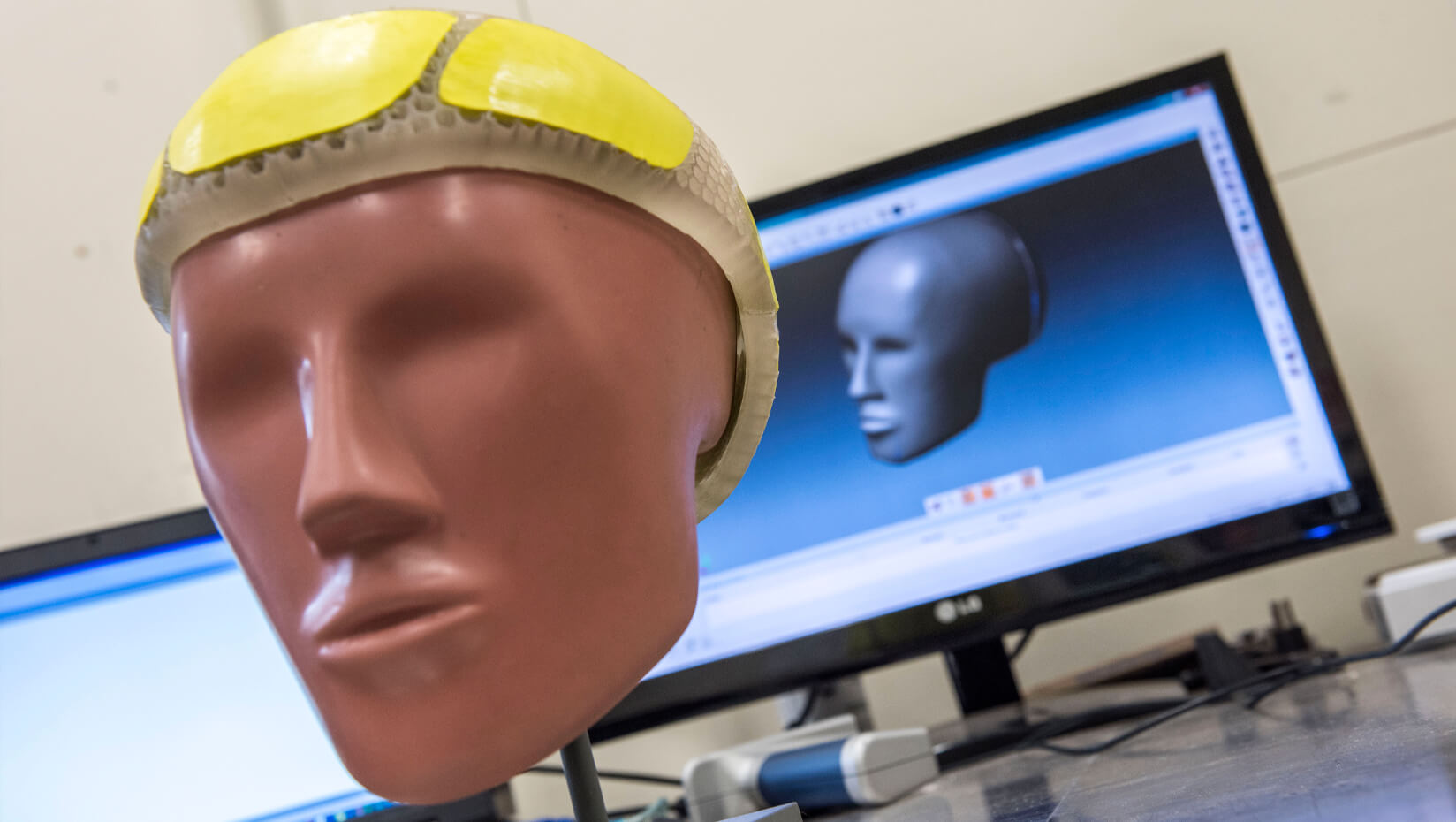
Alba-Technic, UMaine engineers accept the Head Health Challenge
Inventor and entrepreneur James Ferguson uses his head.
And with assistance from University of Maine researchers, he’s creating a material to help other people protect theirs.
The founder and CEO of Alba-Technic, LLC in Winthrop, Maine has developed a patented, shock-absorbing material system to shield the brain from injury.
Ferguson, a former nuclear power plant engineer from Scotland, compares the state-of-the-art material to a second skin that absorbs and disperses blows before they reach the brain.
His product was a hit in the Head Health Challenge III. Ferguson was one of five, among 125 international entrants, to garner a $250,000 prize and advance to compete for the $500,000 grand prize.
The challenge is a collaboration of the NFL, Under Armour, GE and the U.S. Department of Commerce’s National Institute of Standards and Technology.
The competition is being held to support development of advanced materials that better dissipate impact and thus improve protective gear for football players and military personnel.
Ferguson’s impact-resisting material has a soft honeycomb inside layer that absorbs blows by deforming, buckling and moving in multiple directions. The outside layer — made of a dilatant material that is usually soft — also absorbs shock. And when the material system sustains a big blow, the dilatant layer stiffens, spreading the load over numerous honeycomb cells.
Ferguson and UMaine are working to improve the material system, and early in 2017 Ferguson will submit the final entry to Head Health Challenge III.
University researchers, including mechanical engineering professor Vincent Caccese, test the material in the Advanced Biomechanics Lab for Injury Reduction and Rehabilitation in UMaine’s Advanced Manufacturing Center (AMC).
During testing on the linear impact machine, blows are repeatedly delivered to a crash test dummy wearing a helmet containing Ferguson’s patented dilatant/honeycomb material.
The machine producing the hits at up to 12 meters per second approximates a head-on collision between two football linebackers each running 25 mph.
“AMC and UMaine have been instrumental in allowing us to develop the advanced materials so [quickly],” Ferguson says, adding that UMaine researchers also conduct drop testing, computer simulations and laser scanning.
”It’s a great partnership — UMaine, AMC and Alba-Technic.”
Ferguson brainstormed the idea years ago, when he coached youth soccer in Cape Elizabeth, Maine. To help hesitant youngsters gain confidence heading the ball he developed a protective headband.
When Dr. Steve Castle, a clinical professor of medicine/geriatric medicine at UCLA, saw the invention he knew it also could benefit his senior patients at risk of falling.
So Ferguson created the SMARTY® (Smart Materials And Research Technology for You). The SMARTY® — which soon could be available commercially — looks like a designer headband. It protects the wearer from blows to the head during falls.
“You can’t stop people from falling — but you can give them extra protection,” says Ferguson.
One of his friends, who sustains as many as five seizures a day, wears a SMARTY®. Ferguson says it repeatedly saves her from brain injury and preserves her quality of life.
Caccese says people don’t feel stigmatized wearing a SMARTY® because it’s aesthetically pleasing, contours to the head and doesn’t have a chinstrap.
Using criteria employed by the National Highway Traffic Safety Administration, Ferguson says the product can reduce trauma to the head by about 60–70 percent, depending on the thickness of the material employed in the design. And when referring to g-force, it can potentially reduce an impact of 300 g — which can result in death— to less than 100 g.
These materials and products, says Ferguson, have the potential to improve the lives of NFL players and military personnel, as well as millions of others, including toddlers, athletes at all levels, people who have seizures and centenarians.
“It’s a tremendous opportunity,” Caccese says, “and the reward is a chance to help prevent injury.”
